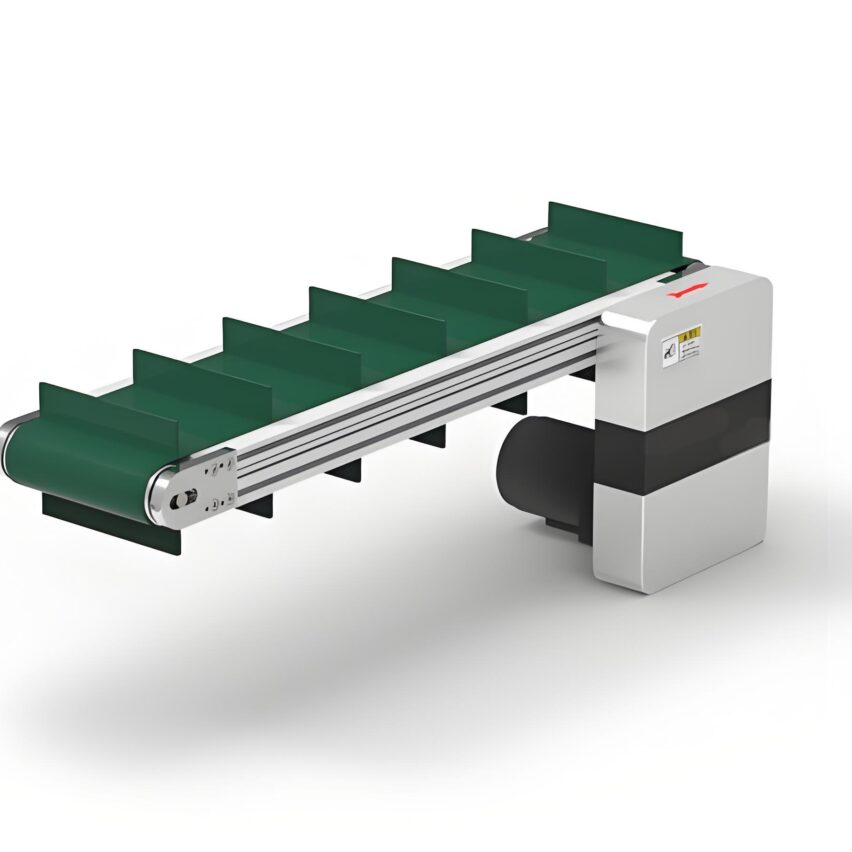I. Technological architectural innovation: from modular reconfiguration to digital nerves
The core value of the lithium logistics line isTransforms traditional linear conveying into a programmable material control network. ByIntegration of Modular Mechanical Units with Intelligent Dispatch SystemsIts technology system breaks through the industry's three major bottlenecks:
- Dynamic Adaptation Architecture: Aluminium profile guide rail integrated spring limiting device, which reduces the cell stacking offset rate by 60%, and improves the efficiency of NDT module inspection by 40%;
- Space folding technologyThe design of double line body of speed chain compresses the occupied area of 40%, and the AGV intelligent return system enhances the pallet circulation efficiency of 50%, which realises the efficient use of vertical space in the factory building;
- Extreme operating conditionsMilitary-grade plastic components have a deformation rate of <0.1mm/m within the temperature difference of -25℃~120℃, and the life span of salt spray test exceeds 100,000 hours.
"Logistics lines are algorithmic carriers of the laws of physics."--This concept drives theElastic extension of mechanical propertiesThe first step is to establish a dynamic balance between heavy-duty stabilisation and flexible production.
Vertical Scene Penetration: From Wafer Manufacturing to Module PACK
Polar Volume Transit Revolution
- High-precision cantilever robot to achieve ±0.05mm pole roll positioning, roller press loading and unloading efficiency increased by 30%, completely replacing the manual trolley mode;
- V-Block Docking Robot Automatic Distance Change TechnologyAdaptation to mixed-line production scenarios, 80mm stroke submerged design to solve the 4-tonne material handling pain points.
Chemical Composition Safety System
- The stacker integrates an active suction smoke alarm, second isolation disposal of abnormal batteries, and passes the EU CE certification standard;
- digital twin closureLES system realises full life cycle traceability of electric core, with 99.8% accuracy of data linkage between high-temperature static storage and chemistry cabinet.
Module PACK Flexibility Revolution
- Mobile robots equipped with cache cabinets to achieve "car instead of line", the production line reorganisation efficiency increased by 40%, space utilisation reached 90%;
- 3D vision positioning + multi-axis robot automatic sorting, sweep NG core rejection speed up to 12PPM, labour cost down 60%.
Multimodal transport and the carbon efficiency revolution: reconfiguring the global lithium supply chain
Mode of transport busting
- In 2024, China's railway first large-scale test transport of power batteries, Chongqing - Yibin line to open the "railway + maritime" mode of intermodal transport, the transport cycle shortened by 30%;
- Carbon Footprint Management Breakthrough: Recycled aluminium recycling rate of 92%, bamboo fibre chainplates reduce carbon footprint by 4.2kg per kilometre.
Gaming the International Rules
| shore | Traditional Strengths | Chinese countermeasure strategy |
|---|---|---|
| EU | CE marking system | Graphene Noise Reduction 15dB Technology |
| North America | Revolving lease network | SaaS Platform + Sharing Economy |
| Japanese | Silent Technology | Magnetic scale ±0.05mm positioning |
"The mode of transport determines the radius of the industry."--When Sichuan PlanningLithium transport corridor from the Yangtze River Delta in the east to Beijing, Tianjin and Hebei in the northAs bamboo fibre chain plates flow around the cold chain network day and night, these innovations are in fact China's smart manufacturing revolt against the law of entropy increase in the supply chain. PricewaterhouseCoopers model predicts: 2027 multimodal transport ecology will spawn180bn carbon marketand the rule-making power necessarily belongs toA company that transforms logistics lines into carbon efficient algorithms.
Self-questioning: penetrating the industrial fog
Q1:How to break through the lithium logistics "heavy asset trap"?
A: Capillary level innovation + LaaS model
- Beverage Giants Practice: The core line adopts temperature control ±0.1℃ inverter system, the auxiliary line uses bamboo fibre board to reduce the cost by 60%, and the comprehensive energy efficiency is improved by 35%;
- Old thread regenerationGround drag chain production line retrofitting modular guide, input only new line 15% but to solve the 50% space conflict---Activating stock assets with micro-remodelling.
Q2: How can small and medium-sized manufacturers deal with carbon barriers in Europe and the US?
A: Vertical patent jam + standard countermeasures
- Leak-proof work plates: Field Structure + Edge Computing Chip for Second Response to Chemical Incidents;
- Short knife electric core special line: Compatible with 380/580mm size, 12ppm efficiency to monopolise market segment -Building Asymmetric Advantage in the Giant Standards Gap.
Q3: What is the value anchor for lithium logistics in 2030?
A: Moving from "tonne-kilometre cost" to "carbon efficiency freedom"
- Energy consumption ratio of 0.8kW/ton-km (optimised by 1,70% from 2019) and LaaS model resulting in a fixed asset investment reduction of 37%;
- final trend:.Dual algorithms for mechanics and carbon efficiencyThe dominant player will monopolise the 60% high-end market, and China's patent growth rate in graphene noise reduction and other technologies is 17%.
Exclusive Data Insight::
The global lithium logistics market size is set to surpass $200 billion by 2030, and theThe real competitiveness of Chinese companies is not in the sales of AGVs (accounting for 60% globally), but whether they lead the international standard of "carbon efficiency algorithm".. Currently European companies hold the core patent for 451 TP3T, but China has differentiated itself in innovations such as multiplier chain bilinear bodies (static stiffness increase of 701 TP3T) and intermodal railway transport (cycle time reduction of 301 TP3T) -The winner of the next round of the game will depend on who can translate Newton's third law into a tradable carbon reduction equation, rather than simply competing for the number of devices.













